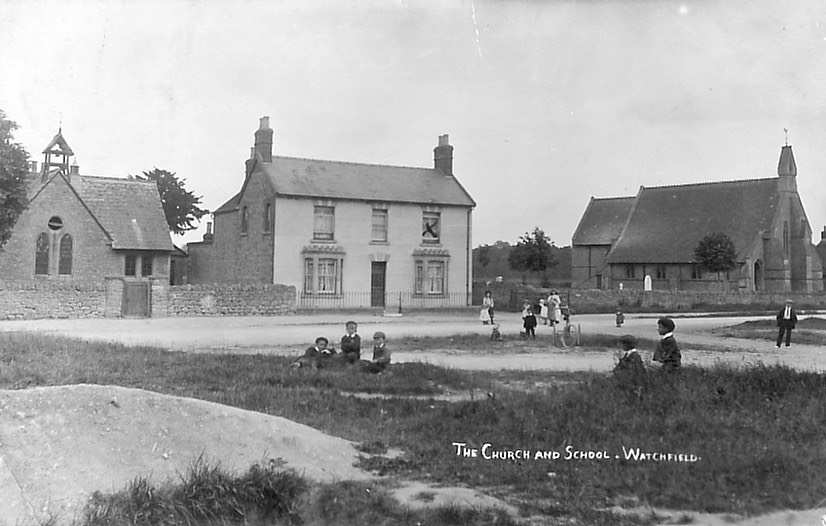Most villages had an animal Pound, usually a walled enclosure where stray animals, or animals being driven, might be kept overnight, and Watchfield was no exception. On 25 January, 1862 George Murray, Vicar of Shrivenham, wrote to Lord Radnor, ‘My Lord, I Beg to acknowledge the receipt of your Lordship’s letter. If it is a matter of indifference to you whether or not the pound be the site of the new school, I should very much prefer having it there, as the cottage adjoining the pound has been already given by Lady Catherine Berens as a residence for the Mistress - and it would be advisable to have the two buildings as near each other as possible.(BRO D/Epb C98)
I believe also that the Contractors have already begun the wood work of the building according to the plans forwarded to your Lordship with the alterations which you kindly suggested respecting the size of the windows.
I will call on Mr Moore on Monday and speak to him on the subject, unless I have a note from your Lordship expressing a wish to the contrary.’
Lord Radnor consented to the use of the Pound site and the school house was duly constructed there. However, whilst keeping an eye on expenditure, George Murray was obviously troubled by one bill in particular, when on 14 March, 1862 he pointed out to Lord Radnor that the charges made by Crowdys Solicitors would make a large hole in the School Funds. He asked Radnor for his approval before he paid the invoice, in the hope, I suspect, that Radnor would put pressure on Crowdys to lessen or waive the charges. There is nothing in the records to confirm the outcome.
From his Vicarage in Shrivenham, George Murray wrote to Radnor on 5 February, 1863, ‘My Lord, I venture to address you on a subject in which the welfare of the hamlet of Watchfield is closely connected.
Your Lordship can well understand the benefit of having a married curate residing in the hamlet - indeed Mrs Wodehouse’s work has been (I hope) so successful that I am most anxious the poor people there should continue to enjoy the presence of a lady among them - This I plainly for-see will not be the case unless I can secure a more commodious cottage than I have now to offer for a married man.
I understand that your Lordship is about to build new cottages in Watchfield and I believe I am pleading the cause of the inhabitants when I venture to ask if any of the new cottages could be arranged for a curates residence. Mrs Wodehouse has often told me of the very great inconvenience of their present cottage and has suggested that a double cottage might be so adapted as to be converted into two dwelling houses if no longer required as a Clergyman’s house.’

Picture 58. The Old School House above.
Picture 59. The new School (present) below

Picture 60. The High Street at the junction of Chapel Hill in 1905. Note the new Chapel (right) built in 1857, approximately 50 years earlier than when this photo was taken. The School House (left) was built 5 years later on the site of the old animal pound. The house in the middle was formerly the site of the ‘Poor House’ until converted into 2 dwellings in 1879. In the early 20th century it was known as Lilemore Cottage and was a Hairdressing salon in the 1960’s.
Photo courtesy of Mr Paul Williams, from the Hooper Collection. Info on the Poor House, thanks to Ian Pearson for the sight of his property deeds.